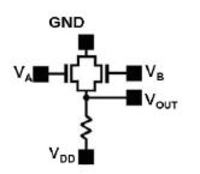electronicman26
Full Member level 2
Hi
I want to compare a logic gate (for example nand,or,and,not,...) performance based on mosfet with the same based on ofet
now I have several question:
1-should the circuit topology be same in mosfet and ofet based?
2-is it correct that compare 0.18um mosfet with ofet that has 25um length?
I want to compare a logic gate (for example nand,or,and,not,...) performance based on mosfet with the same based on ofet
now I have several question:
1-should the circuit topology be same in mosfet and ofet based?
2-is it correct that compare 0.18um mosfet with ofet that has 25um length?
